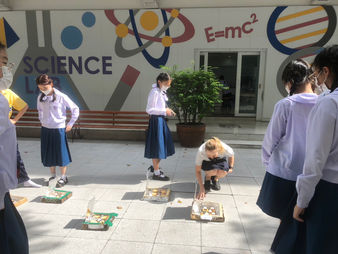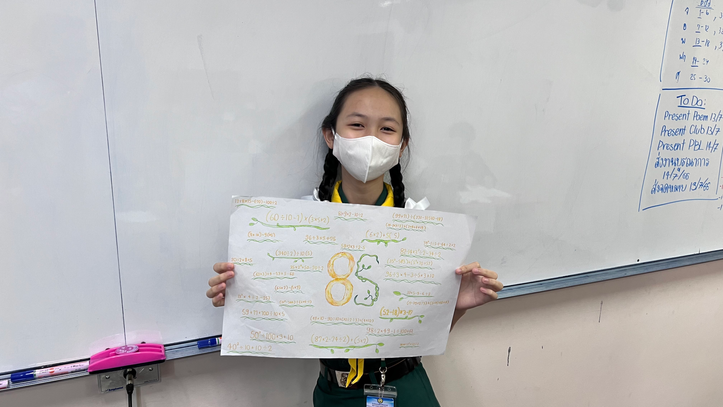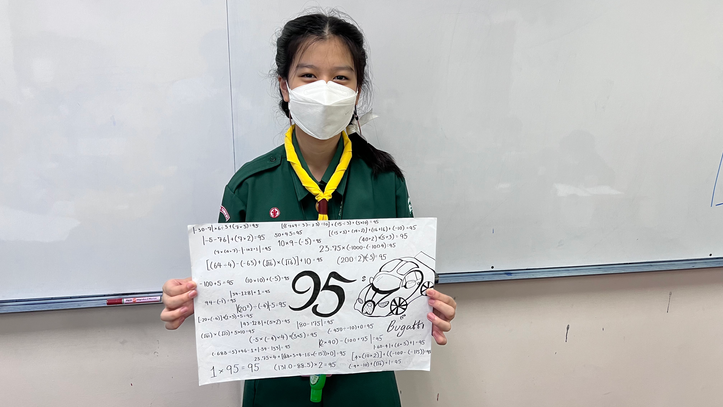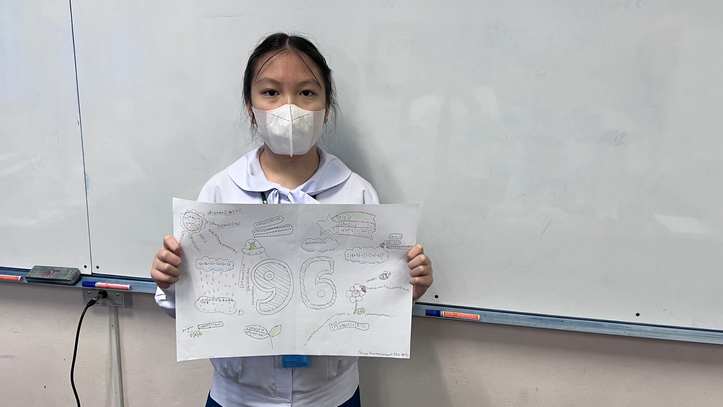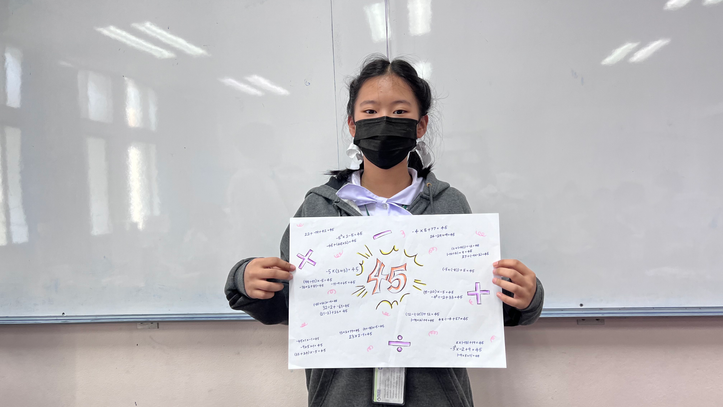Grade 7 Hands-on
School Year 2023/24
Sleepier Hollow - English - 2023/24
The final Additional English project (Sleepy Hollow 2: Sleepier Hollow) tasked students with continuing the story of Sleepy Hollow past the final chapter as a short play. This not only allowed students to flex their incredible imaginations (and their talent for acting!) but tested their understanding of what happened in the novel.
Slime Lab - Science - 2023/24
To help students understand the different states of matter, we made slime in the lab using corn starch, water and food colouring. We explored how this slime in particular acts like a solid when you apply pressure and also a liquid when there is no pressure. This activity got the students thinking about the properties of solids and liquids and they discovered that this type of slime is a non-newtonian fluid.
Microscope Labs - Science - 2023/24
In this lab, the students learnt how to use a light microscope. We used the light microscope to look at an animal cell and a plant cell. The students swabbed the inside of their cheek to get a cheek cell and extracted a thin layer of onion epidermis which we used as our plant cell.
The students then practised focusing the microscope on these different cells and had to draw what they saw. The students practised changing the objective lens to improve the magnification of the cell so they could see the cell in greater detail. We compared the different structures and features of the two different cells.
Students also looked at the stomata found on leaves under the microscope. We took leaves from plants outside and using nail polish and tape looked at how many stomata we could see on the top and bottom of a leaf.
We found that there were more stomata on the bottom of a leaf. This is because this part of the leaf is normally in the shade and this reduces water loss.
Solar Oven - Science - 2023/24
In this lab, students built a solar oven out of a pizza box. They used a mixture of foil, plastic wrap and black paper to create their solar oven. We used the solar ovens to make s’mores - marshmallows and chocolate in between two crackers. This was to show the transfer of energy from the sun into heat to melt the chocolate in the s’more.
Poetry Slam - English - 2023/24
In this Additional English unit, we looked at figurative language, with a particular focus on simile and metaphor. The idea was that an understanding of how figurative language works would enhance and enrich students' reading, while also giving them tools with which to express themselves creatively.
Students looked at lyrics from Taylor Swift's songs that used figurative language and interpreted their meaning. We then looked at several poems that employed similes before moving on to the creative section of the unit, in which students were asked to write simile poems of their own about their best friends. They were then tasked with making these poems into posters.
Once their poems and posters were completed, students took part in a “Poetry Slam” where each student came to the front of the class and read their poems aloud to everyone.
Integer calculations - Math - 2023/24
For this assignment, students were assigned a random number between 20-99. Once they were given their number, they were tasked with finding 30 different integer calculations that equalled that number. For the calculations, they had to use positive and negative integers and at least 2 operations including addition, subtraction, multiplication and division.
After they had finished all their calculations on a provided worksheet they made a poster that had the number and their 30 calculations. This project utilized their critical thinking skills and creativity by having them come up with various calculations and then make an artistic poster.
Atom Lab - Science - 2023/24
In the Build an Atom Lab, students worked in groups to make a model of an atom using modelling clay, toothpicks and cling film. They used these items to show the different parts of an atom: protons, neutrons, nuclei and electrons. Some groups were very creative with their models and made a stand so their models could be upright. Each group presented their model to the rest of the class and explained what material represented which part of the atom. This lab helped with the student's understanding of the different parts of an atom by making it visual.
Ping Pong Pick up - Science - 2023/24
In this lab, students worked in groups to make a device that could pick up a ping pong ball and bring it back across the start line. They followed the design process that engineers use to construct their devices.
Groups started by brainstorming ideas and sketching their ideas on paper. Each group built their device using paper, tape, paper clips and string. Once they had a prototype, they could practice picking up a ping pong ball and make adjustments as needed.
Each group then went head to head to see who could pick up a ping pong ball from the furthest distance. This lab helped the students to apply the different steps in the design process so they can appreciate how important making a prototype, testing,g and redesign is.
Rutherford Gold Foil lab - Science - 2023/24
In this lesson, we used a hula-hoop, tennis ball and some ping pong balls to recreate what Ernest Rutherford did in his famous gold foil experiment which led him to discover the existence of protons and the nucleus inside the atom.
The students threw ping pong balls at the hula hoop and as a class, we recorded how many balls hit the tennis ball in the middle of the hula hoop and how many missed. The ping pong balls represented the alpha particles that Rutherford fired at a sheet of gold foil. The hula hoop represented a gold atom in the gold foil. Because ping pong balls bounced off the tennis ball, this showed us that there was a very small, positive nucleus in the center of the atom.
























































































